Chart Of The Day: The Pickup Truck Portion
Pickup truck sales increased 10% in the United States in October, an 18,590-unit jump in a market which grew 6%. Besides drawing attention to the, “The people buy trucks because the fuel is cheap,” argument, which is not at all completely false nor entirely true, the 10% increase drew our attention to the massive figures generated by the biggest nameplates and their expansive product ranges.
We’ve covered truck sales already this month, so rather than taking another deep dive into October’s specifics, consider instead the percentage of America’s growing auto market that belonged to the pickup truck category last month: 15.8%.
That’s not a small number. Indeed, it’s a significantly larger number than the one achieved by the category through the first ten months of 2014: 13.8%. For perspective, however, think back one decade. In 2004, 19% of the new vehicles sold in America were pickup trucks.
Although this chart provides another line at which to gander, we’re not suggesting that buyers of dual-rear-wheeled Ram 3500s are switching over to Honda CR-Vs, only that times are changing. Pickup trucks remain vital to the health of the American auto industry, more significantly because of their profit generation than with their outright volume. But the market isn’t returning to a 16 million+ annual sales pace because of the strength of passenger cars, or minivans, or pickup trucks. It’s the ess-you-vees.
The Honda CR-V, Ford Escape, and Toyota RAV4 are all on pace for another record sales year, a follow-up to 2014’s record sales year for each of those nameplates. Ford should also sell more than 750,000 F-Series pickups, a startlingly high number compared with the totals achieved by other vehicle lines, but not exactly the 939,511 sold in 2004.
Timothy Cain is the founder of GoodCarBadCar.net, which obsesses over the free and frequent publication of U.S. and Canadian auto sales figures.
More by Timothy Cain
Latest Car Reviews
Read moreLatest Product Reviews
Read moreRecent Comments
- SCE to AUX Norway is in Europe, and Tesla is an American automaker - no problems there.I wouldn't use Ford as the bellwether.https://www.reuters.com/business/autos-transportation/tesla-extends-lead-norway-evs-take-record-82-market-share-2024-01-02/https://elbil.no/english/norwegian-ev-policy/
- Steve Biro If the U.S. government wants to talk about banning all connected cars - or at least the collection and sharing of information from said vehicles - I’m all ears. Otherwise, don’t waste my time.
- Ajla Both parties are in favor of banning Chinese vehicles so I don't see how it won't happen in the next year.
- Add Lightness I don't waste a lot of time watching nothing much happening by watching the YouTube 6 minute highlights.
- MrIcky from my rental fleet experience, id rather drive one of these than a camry.



















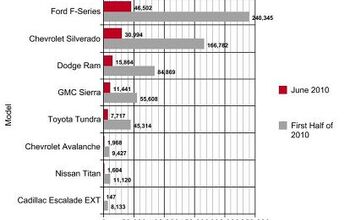
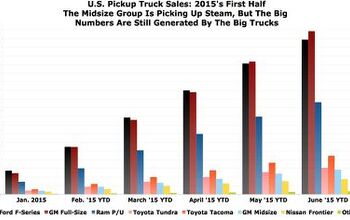
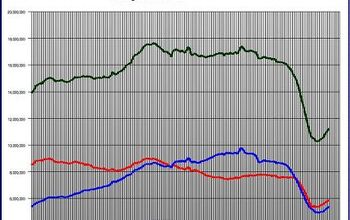
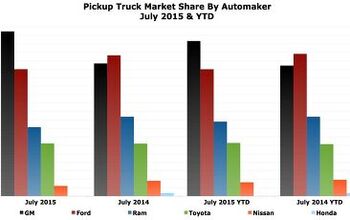
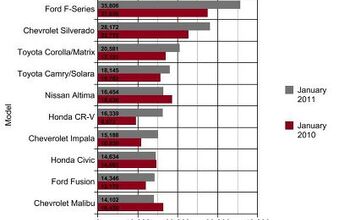
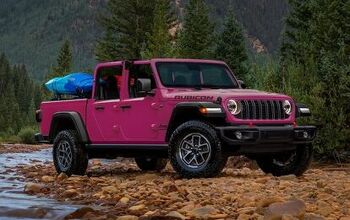







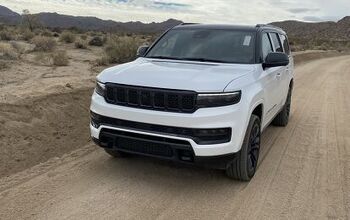
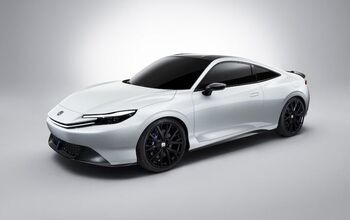
Comments
Join the conversation
Well... this discussion has gone to South Park levels of hyperbole. I've owned a compact pickup in the past (which would be seen as sedan height the way cars are growing these days!), and have occasion to drive a full-size pickup on occasion. The compact truck was OK, but the fullsize ones have never been my cup of tea - they always felt ponderous and unsafe. Sudden movements (i.e. swerving) felt unsecure, and I felt that I wouldn't be able to carry out an evasive maneuver without losing control of the vehicle. Unless I put a few hundred pounds in the bed, mine would clatter over the smallest imperfections... the bed would actually shake independently of the cab! Consumer reports lists vehicles maximum speed in their swerve-test. A brief sampling includes the F-150 (XLT Crew Cab) at 46.5 mph, SIlverado 1500 at 45.5, the Camry LE and CR-V at 50.5, Accord LX at 53. For comparison, a Mazda MX-5 comes in at 58 mph. Safety will always be a balance between crash survival and crash avoidance, but at least the latter puts the onus on me to spare a life, rather than just rolling the dice with physics and having someone else's death on my conscience. They are incredibly useful though. I'll let someone else drive around with $75 fillups, and gladly supply a case of Shiner Bock to move a large item that won't fit in my car. The funniest part of it... tomorrow, the same voices trumpeting the joy of driving a Full-Size Pickup will be calling the Accord soulless and boring. And thus goes life on the internet.
@Lou BC--Most of us are limited by budget and space as to how many vehicles we can own. I have owned as many as 6 vehicles at a time and that was a chore just to keep the maintenance up and keep them running. I was down to two vehicles but when I bought the Isuzu I kept the S-10 as a beater just to haul things in. Eventually I might get down to one vehicle but if you are going to have an extra vehicle it might as well be a truck just because of their utility. The utility that a truck gives you is something that is hard to do without once you get use to owning a truck.